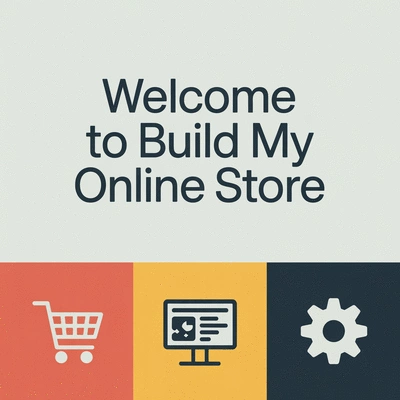What if your online store could attract more visitors and convert them into loyal customers with a few strategic changes? The synergy between SEO and user experience is more vital than ever, and understanding this relationship can transform your e-commerce journey.
What You Will Learn
- SEO and user experience are intertwined; optimizing both boosts visibility and conversion rates.
- A seamless shopping experience increases customer satisfaction and encourages repeat purchases.
- Thorough keyword research helps you understand user intent and tailor your offerings effectively.
- Implementing technical SEO aspects, like site speed, directly enhances user experience and reduces bounce rates.
The Symbiotic Relationship: SEO & User Experience in E-commerce
This visual highlights the critical interplay between SEO and User Experience (UX), demonstrating how their combined strength drives online store success. Each component contributes uniquely, but their integration is key to achieving higher visibility, improved conversion rates, and sustainable growth.
Core Drivers of Online Store Success
SEO Contributions
- ✓ Increased Visibility
- ✓ Higher Organic Traffic
- ✓ Improved Trust & Credibility
- ✓ Relevant Keyword Matching
User Experience (UX) Contributions
- ✓ Enhanced User Satisfaction
- ✓ Lower Bounce Rates
- ✓ Higher Conversion Rates
- ✓ Improved Customer Loyalty
Unified Outcomes: Sales Growth & Customer Retention
Understanding the Synergy Between SEO and User Experience
As I’ve navigated the world of e-commerce with Build My Online Store, I've discovered that the relationship between SEO and user experience is crucial for online success. Many entrepreneurs overlook this synergy, thinking they can focus on one at a time. However, both elements work together to enhance your online store’s performance and customer satisfaction!
When users have a seamless experience while browsing your site, they’re more likely to make a purchase. Likewise, when your store is optimized for search engines, it attracts more traffic. Together, these components create a powerful foundation for your business growth.
Why Both Elements Matter for Online Store Success
Understanding why SEO and user experience matter can transform the way you approach your online store. A well-optimized site will not only rank higher in search results but also provide a pleasant experience for your visitors. Let’s break down the key reasons:
- Increased Visibility: Effective SEO practices ensure your store appears in search engine results, driving more potential customers to your site. Research indicates that optimizing for search engines significantly boosts online visibility, as highlighted in academic papers on e-commerce optimization, such as those found on Coveo's blog.
- Enhanced User Experience: A smooth and enjoyable shopping journey leads to higher conversion rates and customer satisfaction.
- Long-Term Success: Focusing on both aspects builds a loyal customer base that keeps coming back to your store.
By recognizing the importance of both SEO and user experience, you can create a strategy that not only attracts visitors but converts them into loyal customers.
How SEO and User Experience Contribute to Sales Growth
When I work with clients at Build My Online Store, I often emphasize how intertwined SEO and user experience are in driving sales. Here are a few ways they contribute effectively to your bottom line:
- Higher Conversion Rates: Users who find your site through organic search are often more interested in your products, leading to increased sales. This correlation is further explored in studies on digital commerce, including research published on ACM Digital Library, which delves into the impact of user interaction on e-commerce success.
- Lower Bounce Rates: A well-optimized site keeps users engaged, decreasing the chances they'll leave without making a purchase.
- Improved Trust and Credibility: A site that ranks well and is easy to navigate builds trust with potential customers, making them more likely to buy.
In short, integrating SEO with a positive user experience not only boosts visibility but also directly impacts sales growth!
The Role of Keyword Research in Enhancing User Experience
One of the best practices I've found at Build My Online Store is the importance of thorough keyword research. This step not only improves your SEO but also significantly enhances user experience. Here’s how keyword research plays a vital role:
- Understanding User Intent: By identifying the keywords your target audience is searching for, you can tailor your content and offerings to their needs.
- Optimizing Content: Using relevant keywords in product descriptions and blog posts helps users find exactly what they’re looking for.
- Improving Navigation: Keywords can guide your website structure, making it easier for users to navigate to the information or products they want.
Incorporating keyword research into your strategy enriches both SEO and user experience, helping you connect with your audience on a deeper level.
Pro Tip
Did you know? Conducting regular audits of your website's SEO and user experience can lead to continuous improvement and higher conversion rates. Schedule a quarterly review to assess site speed, mobile responsiveness, and keyword relevance. This proactive approach ensures that your online store remains competitive and aligned with user expectations. The critical role of usability in e-commerce is further emphasized in studies such as those presented at the International Conference on Human-Computer Interaction Theory and Application, which highlight the direct impact of user interface design on business success.
Frequently Asked Questions (FAQs)
What is the primary benefit of integrating SEO and user experience for an online store?
The primary benefit is achieving both higher online visibility through SEO and improved customer satisfaction and conversion rates through a positive user experience. These two elements work synergistically to drive sustainable growth and customer loyalty.
How does keyword research contribute to a better user experience?
Keyword research helps you understand what your audience is searching for, allowing you to tailor your content, product descriptions, and website navigation to their needs. This makes it easier for users to find relevant information and products, enhancing their overall experience.
Why is site speed important for both SEO and user experience?
Site speed is crucial because search engines like Google factor it into their ranking algorithms, impacting SEO. For user experience, a fast-loading site prevents frustration and reduces bounce rates, encouraging visitors to stay longer and engage with your content or products.
What tools are recommended for optimizing SEO and UX?
Recommended tools include Google Search Console for performance monitoring, Ahrefs or SEMrush for keyword research, Hotjar for user behavior analysis, Yoast SEO for WordPress users, Canva for visuals, and PageSpeed Insights for site speed analysis.
How can analytics tools help in making data-driven decisions?
Analytics tools like Google Analytics provide critical data on customer behavior, traffic sources, and product engagement. By analyzing this data, you can identify effective marketing channels, understand customer preferences, and pivot your strategies to optimize your online store's performance.
Summarizing Key Takeaways for Your Online Store
As we wrap up our discussion, it's essential to highlight the key takeaways that can elevate your online store's performance. Integrating SEO with user experience is not just a strategy; it's a necessity for any successful e-commerce business. When you focus on optimizing both elements, you create a more engaging environment that encourages customers to explore, shop, and return. Let's break down these insights!
- SEO and user experience work hand in hand to boost visibility and conversion rates.
- Creating a seamless and fast shopping experience keeps customers happy and increases the likelihood of sales.
- Keyword research not only drives traffic but also enhances the relevance of your content to what users are searching for.
The Importance of Integrating SEO with User Experience
Integrating SEO with user experience is crucial for online stores like Build My Online Store. When users find your site appealing and easy to navigate, they are more likely to stay longer and make purchases. Here’s why this integration matters:
- Improved visibility leads to more organic traffic.
- Better user experience reduces bounce rates, increasing the chances of conversion.
- Happy customers are more likely to recommend your store to others.
In my experience, I've seen businesses thrive when they prioritize both SEO and user experience. It creates a win-win situation that ultimately results in higher sales and customer loyalty.
Next Steps for Implementing Effective Strategies
Now that we've covered the importance of SEO and user experience integration, what are the next steps you can take? Here’s a simple roadmap to get you started:
- Conduct a comprehensive SEO audit of your online store.
- Analyze user behavior through tools like Google Analytics and identify areas for improvement.
- Focus on technical SEO aspects such as site speed and mobile-friendliness.
- Create a content strategy that emphasizes quality product descriptions and engaging blog posts.
Taking these steps will not only enhance your store's performance but also set the stage for sustainable growth. Remember, every small improvement counts!
Explore Additional Resources and Tools
To further support your journey in optimizing your online store, I've compiled some valuable resources and tools that can help streamline both SEO and user experience efforts. These resources are tailored specifically for Australian businesses, ensuring relevance and effectiveness.
- Google Search Console: Monitor your site's performance and optimize for better search visibility.
- Ahrefs or SEMrush: Comprehensive tools for keyword research and competitor analysis.
- Hotjar: Understand user behavior through heatmaps and session recordings.
By leveraging these tools, you can gain insights into your store’s performance and make data-driven decisions. The right resources can empower you to optimize efficiently!
Recommended Tools for SEO and UX Optimization
Here’s a detailed list of some of my favorite tools:
- Yoast SEO: A powerful plugin for WordPress users to enhance on-page SEO.
- Canva: Create stunning visuals for your product listings and social media.
- PageSpeed Insights: Analyze and improve your site’s loading speed.
These tools can help you fine-tune your online store's performance and user experience. Trust me; investing time in these resources will pay off in the long run!
Real-World Case Studies Demonstrating Successful Implementations
Learning from real-world examples can inspire you to innovate in your strategies. Here are a few case studies worth exploring:
- A local Australian clothing brand boosted sales by 30% after optimizing their site speed and product descriptions.
- An e-commerce store specializing in home goods saw a significant increase in organic traffic through targeted keyword strategies.
- A tech gadget retailer improved their conversion rates by simplifying the checkout process and implementing trust signals.
These stories illustrate that with the right approach, any online store can achieve remarkable results. Don’t hesitate to adapt these lessons to your own business model!
Utilizing Analytics Tools for Data-Driven Decision Making
Lastly, harnessing the power of analytics tools will help you understand your customers better and make informed decisions. Tools like Google Analytics and Facebook Insights provide critical data on customer behavior and preferences:
- Track which products attract the most attention.
- Analyze traffic sources to identify effective marketing channels.
- Measure the success of your SEO strategies over time.
Using data-driven insights allows you to pivot your strategies effectively, ensuring your online store thrives in the competitive e-commerce landscape. Remember, knowledge is power!
Recap of Key Points
Here is a quick recap of the important points discussed in the article:
- SEO and user experience work hand in hand to boost visibility and conversion rates.
- Creating a seamless and fast shopping experience keeps customers happy and increases the likelihood of sales.
- Keyword research not only drives traffic but also enhances the relevance of your content to what users are searching for.
- Integrating SEO with user experience leads to improved visibility and lower bounce rates.
- Utilizing analytics tools empowers data-driven decision making to enhance your online store's performance.










